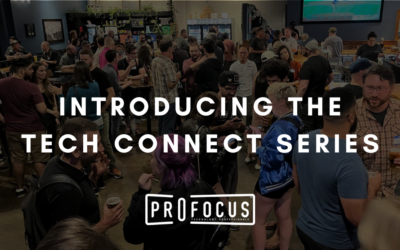It may be strange hearing this from someone like me, who works and breathes technology for a living, but technology moves too DAMN FAST.
Or maybe I’m getting to be too much of a curmudgeon as I get older?
I’m pretty sure it’s a combination of both.
There’s an old saying that’s a little cliché but still very true. The only constant in technology, is CHANGE.
Nothing ever stands still in technology. Anyone who buys an electronic gadget from their nearest Best Buy retail store or from Amazon knows this to be a fact. The millisecond you open up your brand new and shiny laptop, smartphone or tablet device, it’s instantly morphed into “old hat” technology.
C’est la vie … welcome to technology!
Lately, I’ve been hearing a lot of buzz and excitement around cryptocurrency like “bitcoin”.
You’ve probably heard this buzzword a lot as well. Something about how insanely high the currency value of bitcoin has exploded. I just did a quick search on the internet, and the current exchange rate between a bitcoin is one bitcoin equaling $2475.50! (Anyone have a nice little time machine I could borrow for a little while??)
Bitcoin may be grabbing all the headlines but the technology that drives bitcoin, referred to as the “blockchain”, might not be as familiar. It certainly wasn’t for me. I only was moderately familiar with bitcoin and knew even less about this blockchain technology.
One of my former work colleagues, urged me to look more closely at blockchain technology. He was confident it would become the next new disruptive technology on the same scale that the world wide web did.
I was honestly a little skeptical about his unbridled excitement, but again, that probably goes back to my being “around the block” and not getting enamored at every new technology that pops up.
But I promised I would humor my friend and look more into it when I got around to it.
And as a software developer, I’ve always been of the firm belief you must constantly keep abreast of the latest technology trends in the industry. It’s an absolutely requirement to keep yourself marketable in today’s high tech job market.
As I learned more about bitcoin and blockchain, I realized my friend was absolutely right … the concept of blockchain is very much a potential game changing technology that could change the way electronic payment processing gets handled in the future.
But it doesn’t just apply to payment processing…i see many other industries with the potential of being massively disrupted by blockchain technology.
In order to understand how, it’s first important to get a firm and clear understanding of the basic concepts and principles behind blockchain technology.
So what exactly is blockchain?
Blockchain is the technology that allows bitcoin digital currency to exist. But blockchain is NOT bitcoin, and it’s important to understand the difference.
Bitcoin is digital currency. Which is all fine and good. But digital currency in of itself, isn’t very useful, unless you have the technology to MOVE bitcoin currency from one person to another or one organization to another. And that is where blockchain comes in.
Blockchain technology’s primary purpose is to solve a particular problem, which is electronic money transfer.
Of course, there are already lots of different ways to electronically transfer money from person A to person B.
If you have a bank account with a particular bank or credit union, you have the ability to transfer money from your own account to another person who has an account with the same banking corporation. Most banks and credit unions even have mobile smartphone apps that let you do wireless money transfers from the convenience of your own smartphone.
There are plenty of independent companies that act as the go-between for two interested parties interested in sending and receiving money from each other. PayPal lets me do lots of different kinds of monetary transactions as well. Apple Pay, Android Pay, and a whole slew of other man in the middle payment processing vendors.
I can use PayPal to wireless transfer money from my own PayPal account, to another PayPal account holder. Or if I’m a business, I can use PayPal to create a digital invoice bill and send it to a customer. The customer receives my digital PayPal invoice and pays the invoice, which wirelessly transfers the money from the customer’s PayPal account to my own.
PayPal represents the “man in the middle” arbiter between person A and person B in a money transfer transaction. Other services pretty much follow the same model.
1. Person A submits a new order to transfer $x.xx amount to a third party vendor like PayPal, so it will end up in Person B’s account
2. The third party vendor identifies and verifies that person B is a legitimate person as well as ensuring that the transaction amount person A wishes to transfer is a valid amount with sufficient funds to complete the money transfer
3. Once the third party vendor verifies person A and person B are legitimate and qualified users, and the money transfer amount is backed by sufficient funds, they perform the actual money transfer transaction.
This technology isn’t new at all and has been around for quite some time. PayPal has been doing this kind of electronic money transfer since 1998.
But there are several shortcomings behind this kind of electronic money transfer. The first is one of time. It can take one to several business days for the electronic money transfer to be successfully posted from one bank account to another. Secondly is that the man in the middle vendor, like PayPal, is obviously not doing this out of charity. They get a cut of every monetary transaction.
The cut may not be very big, but multiply this by millions or billions of money transactions per second, and you can understand the huge profitability for a company like PayPal to stay in business.
Blockchain technology came about to completely eliminate this MIDDLE MAN between person A and person B who wish to transfer money between each other.
By eliminating the middle man, you can eliminate the processing fee for successfully completing the electronic money transfer and you can also reduce the total time it takes to complete the money transfer.
Blockchain technology is able to accomplish this with the concept of an OPEN LEDGER.
For students of banking 101, a ledger represents the complete financial transaction history of debits and credits between two parties. Ledgers are the primary tool for the banking industry as well as for-profit companies, as they contain the complete financial history of all monetary transactions for their organization.
Blockchain operates on the same basic principle of a ledger.
Let’s suppose we have four people. We’ll call them persons A, B, C and D, and they have all opted into the blockchain/bitcoin system.
Let’s also start with $10 as the initial fund with which we want to start our blockchain history of transactions.
Then let’s suppose we have the following money transfer scenarios.
Person A wants to transfer $5 to person B.
Person B wants to transfer $3 to person D.
Person D wants to transfer $1 to person C.
The blockchain open ledger will look like this:
A: $10
A —> B: $5
B —> D: $3
D —> C: $1
An open ledger is essentially a chain of monetary transactions, which is where the “chain” in blockchain comes from.
The concept of the OPEN ledger is that anyone and everyone on the same blockchain network can SEE where the money currently is, and how much each person on the blockchain network currently has in their fund.
Let’s suppose after the money transfers we just described, that person A now wants to create a new money transfer transaction where he wants to transfer $15 to person A. Remember that the current balance for person A is now $5.
This would be considered an INVALID transaction because person A has insufficient funds to perform the money transfer.
Everyone else on the open ledger blockchain network can see that Person A also does not have sufficient funds to perform this new money transfer transaction. Because of this open network, you don’t need the MIDDLEMAN vendor to perform this check anymore.
The second major core concept of this OPEN LEDGER is it is a DISTRIBUTED LEDGER. It means that persons A, B, C, D all have their own copies of the complete open ledger.
Anyone else who wants to participate in the open ledger will also have their own unique copy of the open ledger.
This distributed network concept means there is no need to create a centralized ledger. This concept is also very similar to the git source control network. There is no CENTRALIZED git repo. Every person who participates in git has their own local copy of the git repo.
This kind of distributed model means there is no one central point of failure, which used to happen with other centralized source code systems like Microsoft’s Visual Source Safe and Team Foundation Server. If the centralized source code repository went down, pretty much every software developer that used that system would be dead in the water, until the centralized repo was back up and running.
The challenge behind the concept of this distributed network is how does one ensure that each localized copy of the ledger which each person owns, is completely synchronized with all other ledgers on the blockchain network?
Here is the real interesting part about how blockchain makes this happen.
It uses the one aspect of human nature that’s universal, no matter who you are and where you live.
GREED.
Okay, maybe greed is too extreme of a word. How about SELF INTEREST? Most, if not all of us, aren’t completely altruistic. We all do things with the concept of “what’s in it for me?” that drives many of our thoughts and actions.
Say person B wants to transfer $5 to person C.
The problem is how do you update the open ledger so that B —>C $5 is written into the ledger? You put a monetary incentive to other people on the same open ledger network. The first person on the open ledger network who SEES this new UNVALIDATED LEDGER TRANSACTION and can validate the transfer is successful, will get rewarded a certain amount of bitcoin monetary reward for validating the new open ledger transaction.
The person who wants to VALIDATE a new open ledger transaction between two other participants must do 2 things
1. Validate the new open ledger transaction is valid
2. Obtain a KEY so a new OPEN LEDGER transaction of the new money transfer can be permanently written into the open ledger
In order to obtain this KEY, the person attempting to validate this transaction must invest the time and effort to verify and finalize the new money transfer transaction.
Once the new money transfer transaction has been actually written into the validator’s ledger, you now have the problem of SYNCHRONIZING the new transaction to all the other ledgers on the open network. How does one do that?
Person A sees that the new money transfer transaction B—>C: $5 was already validated and entered into person D’s ledger. There is no need for person A to RESOLVE the new transaction, so person A simply ADDS the new money ledger transaction to person A’s own ledger. And all the other people on the same open ledger network will do the same so that eventually all the other nodes on the open ledger network are synchronized as well.
This is how you keep the entire blockchain network up to date.
You’re using the power of an open and transparent network and economic incentives (we’re all greedy) to make sure that all money transaction activity is kept accurate and up to date.
This is a HUGE new revolution in the way that money transactions can be implemented, but it can also extend to many other kinds of non-monetary transactions. Git is already a working example of how you can use an open distributed network to keep source control up to date.
Vendors like PayPal and major financial institutions could go through major upheavals if blockchain and bitcoin become the new standard of monetary transfers. Developing nations could quickly gravitate to this new money transfer paradigm very quickly.
But blockchain technology, however useful for monetary transfer transactions, could be used for other purposes.
Anytime you want to leverage an open and transparent system where members of a common network wish to interact with each other directly without some sort of “middle man” arbiter, you could leverage a blockchain type network.
As previously mentioned, the open source distributed source control system, Git, operates on a very similar concept as blockchain technology.
What other kinds of transaction models could benefit from eliminating a “man in the middle”?
The problem with many organizations and government agencies is the siloing of information and data. What if every department in a government agency or corporation used a blockchain network to store all relevant information? If we’re talking about our government, unless national security or privacy concerns are involved, public information could theoretically be placed in a universal blockchain network of nodes that are completely open and transparent to anyone who wishes to participate or view data in the blockchain network.
What about a universal power consumption grid where everybody’s metered use of electricity, gas or other forms of energy, could be shared across a universal blockchain network?
This information would be extremely useful to government entities like the Department of Energy, who could analyze the power consumption of every citizen consumer energy in our power grid, and make informed decisions on the most efficient way to distribute power in the most cost and time efficient manner possible.
The possibilities seem endless.
I’m starting to feel some of that technology jadedness fade away when I learn about these exciting new developments in technology.
Probably why I just can’t pull myself away from it. Michael Corleone, I know EXACTLY how you feel…”Just when I thought I was out …they pull me back in!”




